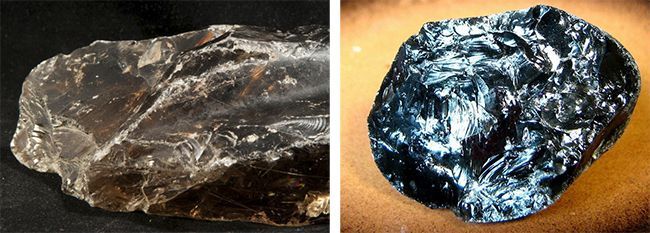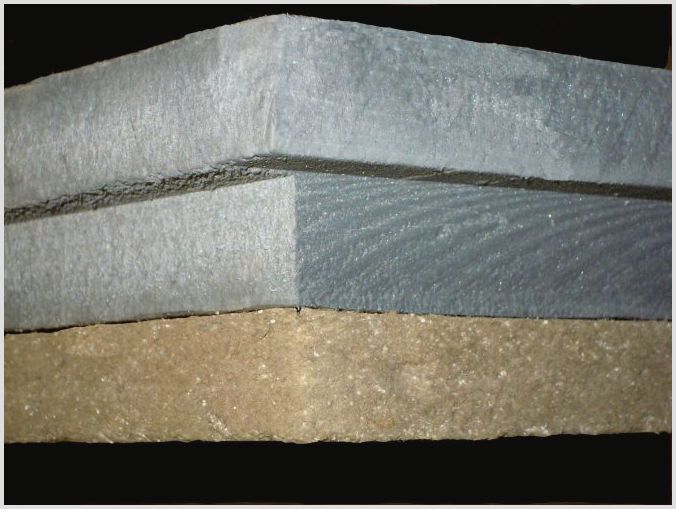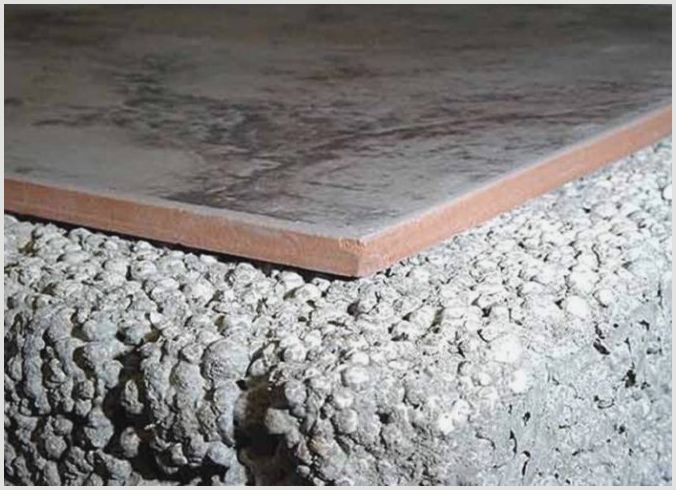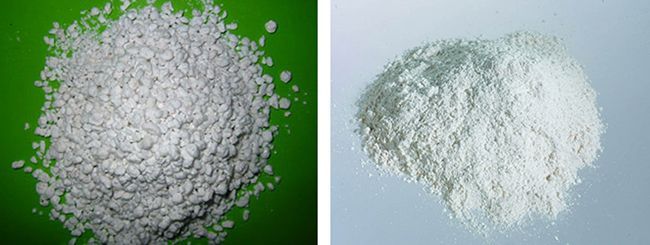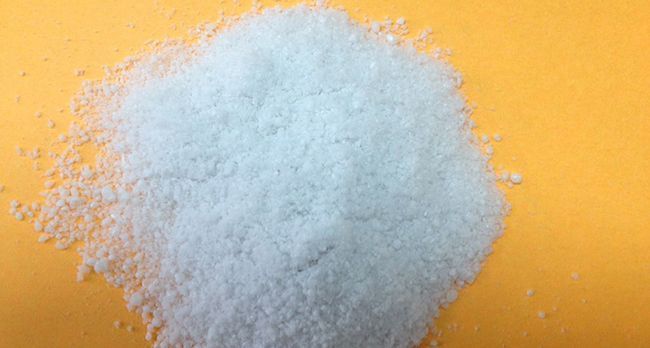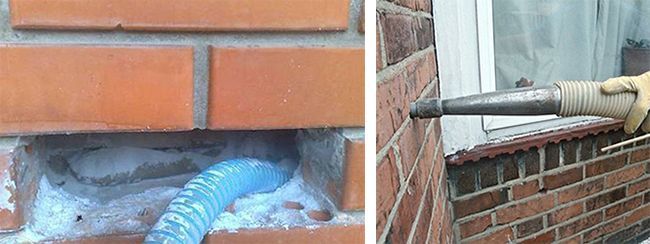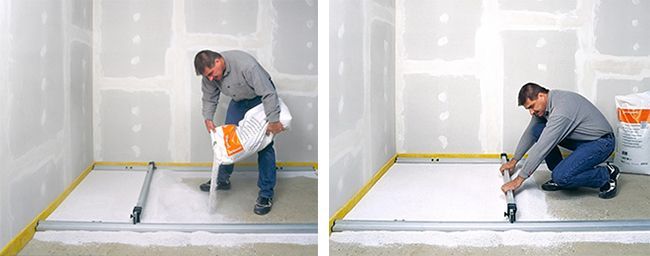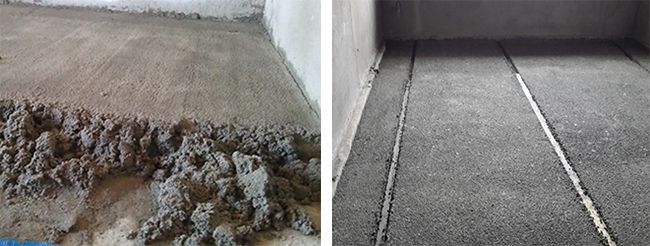Types and form of release
Four main types of perlite are produced for arranging thermal insulation. The material differs in the shape of the inlet and the method of application. Each type of insulation has its own advantages and technical characteristics.
backfill insulation
The material is perlite sand, which is used to fill the voids between the wall and the finish or layers in the brickwork. Such a heater allows you to completely fill all the cracks and openings, providing reliable thermal insulation.
Perlite sand is often used to level floors. It is quite light and does not create additional load on the structures at all. Therefore, it can be used for any buildings. Insulation with fine-grained loose perlite allows to reduce the level of heat losses by more than 40 percent.
Plates
Perlite thermal insulation material in the form of plates is one of the most popular building products. This type of insulation is convenient for the construction of various large structures.
To give the material the necessary qualities in the manufacture of plates, different types of binders are used - cement, clay, liquid glass, lime, bitumen or polymers. Basically, formed perlite is used for internal insulation. This is due to the high hygroscopicity of the material. With external insulation, reliable waterproofing is required.
 Perlite slabs
Perlite slabs
Perlite concrete slabs are especially popular. In addition to expanded perlite, they include sand, water and Portland cement. The strength of the material depends on the ratio of the components. Ready-made perlite concrete blocks are large in size and light in weight. One product can replace three bricks. The use of such material allows not only to ensure the strength of the structure, but also to reduce heat losses.
Roof models
Bitumen-perlite is widely used for insulation and waterproofing of roofs. Such roofing material allows you to create a reliable and sufficiently durable protective coating. Its thermal conductivity is only 0.067 W/m°C.
Bitumoperlite has high technical characteristics. Due to its flexibility, the material can be easily applied in layers on any roof structure. Bitumen-based perlite insulation is a non-flammable and safe thermal insulation product with high wear resistance.
Dry materials
Perlite is widely used in building dry mixes. It is added to improve the performance of gypsum, lime or cement compositions. Such material is widely used in the preparation of grout for joints, putty and adhesive solutions. Quite often, dry self-leveling perlite mixtures are practiced when arranging floors.
Perlite plaster is in particular demand. Its technical characteristics are far superior to conventional surface finishes. Regardless of the degree of graininess, perlite plaster has a low weight, which is especially appreciated when arranging facades.
The material is fire-resistant, does not rot and tolerates the lowest air temperatures well. Perlite plaster has high adhesion and is suitable for all kinds of surfaces. With the help of such a finish, you can create high-quality sound insulation and keep the heat inside the room for a long time.
Perlite insulation technology
You can provide good thermal insulation with perlite yourself. The technology of insulation with such bulk material is quite simple.
Wall insulation
Backfilling of perlite is carried out for brick and block structures. Preparation for insulation is carried out at the stage of wall construction.
The process of backfilling the heat-insulating material occurs as follows:
- all openings and openings through which perlite sand can spill out are sealed;
- the material is poured into the space between the masonry parts;
- by tapping, the insulation is lightly tamped.
 Wall insulation with perlite
Wall insulation with perlite
Bulk material can also be used for backfilling between masonry and interior finishes. For this method of insulation, only dry perlite is suitable.
Floor insulation
For thermal insulation of floors with a monolithic hard coating, perlite sand with a grain size of not more than 6 millimeters is used. The process of laying the material is quite simple:
- perlite sand is poured onto the base of the floor from bags;
- with the help of special rails, bulk material is evenly distributed over the surface;
- all pipelines are immersed in a uniformly laid composition;
- the floor surface is covered with tiles.
Insulation of wood-coated floors does not require material compaction. Perlite sand is simply poured into the openings between the wooden elements of the floor base. The thermal insulation is reinforced with fiberboard or fiberglass. Sometimes cement is used for these purposes. The entire insulated surface is sprinkled with a dry solution, and water is sprayed from above.
Perlite is a modern heat-insulating material with unique properties. With it, you can provide good sound insulation and reliably insulate the structure of the house.
Perlite - what is it and what are its properties. Perlite (a word borrowed from French) is a rock of volcanic origin. At the moment when magma comes to the surface, due to its rapid cooling, volcanic glass (obsidian) is formed, and as a result of groundwater passing through it, perlite (obsidian hydroxide) is obtained.
This natural material is divided into two groups: perlite, which contains up to 1% water, and obsidian hydroxide, in which the amount of water can reach up to 4÷6%. In addition to water, perlite contains oxides of aluminum, potassium, sodium, iron, calcium; silicon dioxide and other chemical elements. Volcanic perlite is a porous material that can be black, green, red-brown, brown or white in color. By texture, perlite rocks are divided into: massive, banded, pumiceous and brecciated. If obsidian is included in perlite, then it is called obsidian; if feldspar, then spherulitic; and if the material is homogeneous in composition, then it is called tarstone.
We study all known varieties
There are only 4 forms of release of this heat insulator: backfill (it is also called sand), slabs (outside identical to extruded polystyrene), roofing models and dry repair mixes. These varieties have certain properties that you need to know.
backfill insulation
The first form factor of Perlite sand to appear is loose heat insulator. The main task of this material during the construction of houses is to soften the structure (it is lighter than the usual cement-sand mixture) and increase its insulating qualities. In most cases, such a layer is used for backfilling floors and interfloor layers. It is also often used to fill empty spaces in wall masonry. Less commonly, it is used in combination (or instead) with warm plaster.
The most functional and functional form - plates
According to official statistics, about 60% of all Perlite sand produced on earth is used to create insulation boards. They are obtained as a result of hydraulic pressing, as a result of which they are quite convenient to use. The binder differs depending on the individual variety (bitumen, lime, polymer compounds, cement, liquid glass, etc.).
This category of materials has a very high hygroscopicity. Due to this, it is used for the most part for interior decoration. All the same, when laying an additional waterproof layer, it can also be used for finishing from the outside.However, this is not very justified from an economic point of view.
Roof models
From the name, it is clear that such analogues are used mainly for roofing finishes. For this task, in other words, bitumen-perlite is used. A material of this kind provides an excellent opportunity to create a layer of insulation of various shapes, due to which it is sometimes used for buildings of an original design.
The main thing! There is no need to heat up before applying this coating!
The average thermal conductivity standard for this variety is 0.067 W (m * C), which is considered the most ideal result. This indicator makes it possible to apply this coating even in the north. It is also necessary to emphasize the incombustibility of this heat insulator, which ensures the overall safety of the building.
Dry repair mixes based on Perlite sand
As a result of mixing cement and perlite, a very productive dry mix for construction work is obtained. The solution is prepared very simply - it is very easy to add water (in other words, no additional additives, such as PGS or gypsum, are required). For the most part, such a composition is used to fill cavities in brickwork, grout joints and cracks, and also create a layer of plaster with very high thermal insulation characteristics. At the same time, it makes it possible to easily straighten the surface.
Insulation - bulk perlite thermal insulation, segments, slabs, plaster
Pros and cons
Perlite has a rounded shape and a characteristic luster that makes it quite similar to pearls. The use of such material as a heater has many advantages:
ecological purity of the material;
fire safety;
resistance to sudden changes in temperature, which is very important for external insulation;
lightness of the material;
lack of smell and toxicity;
relatively low cost;
durability.
 What does perlite look like?
What does perlite look like?
The material is resistant to aggressive compounds, not subject to corrosion, rotting. Loose insulation does not attract insects and rodents and is able to tightly fill the voids, which allows you to achieve a sufficiently high level of sound insulation.
The disadvantage of using perlite as a heater is often considered the formation of dust during installation, which can be harmful to health. But this problem can be solved with the help of protective equipment.
GESN 12-01-013-03
Insulation of coatings with plates: from mineral wool or perlite on bituminous mastic in one layer
LOCAL RESOURCE STATEMENT GESN 12-01-013-03
| Name | unit of measurement |
| Insulation of coatings with plates: from mineral wool or perlite on bituminous mastic in one layer | 100 m2 of insulated cover |
| Scope of work | |
| 01. Preparation of the base. 02. Priming of the base. 03. Laying slabs on bituminous mastic. 04. Preparation of the primer. |
PRICE VALUES
The price lists the direct costs of the work for the period March 2014 for the city of Moscow, which are calculated on the basis of standards 2014 with additions 1 by applying indexes to the prices of the resources used. Indices applied to federal prices 2000.
The following indexes and hourly rates from the "Union of Estimators" were used:
Index to the cost of materials: 7,485
Index to the cost of cars: 11,643
Used hourly rates:
In parentheses are the wages per month at a given hourly rate.
Hourly rate of the 1st category: 130.23 rubles. at one o'clock (22 920) rub. per month.
Hourly rate 2 categories: 141.21 rubles. at one o'clock (24 853) rub. per month.
Hourly rate 3 categories: 154.46 rubles. at one o'clock (27 185) rub. per month.
Hourly rate 4 categories: 174.34 rubles. at one o'clock (30 684) rub. per month.
Hourly rate of the 5th category: 200.84 rubles. at one o'clock (35 348) rub. per month.
Hourly rate of the 6th category: 233.96 rubles. at one o'clock (41 177) rub. per month.
By clicking on this link, you can see this standard calculated in 2000 prices.
The basis for the use of the composition and consumption of materials, machines and labor costs are GESN-2001
LABOR
| № | Name | Unit Change | Labor costs |
| 1 | Labor costs of construction workers Category 3.9 | man-hour | 45,54 |
| 2 | Labor costs of machinists (for reference, included in the cost of EM) | man-hour | 0,55 |
| Total labor costs of workers | man-hour | 45,54 | |
| Wages of workers = 45.54 x 172.35 | Rub. | 7 848,91 | |
| Salary of machinists = 124.27 (for calculating invoices and profits) | Rub. | 124,27 |
Work schedule. Automatic construction according to the estimate.
OPERATION OF MACHINES AND MECHANISMS
| № | Cipher | Name | Unit Change | Consumption | St-st unit Rub. | TotalRUB. |
| 1 | 020129 | Tower cranes when working on other types of construction 8 t | mash.-h | 0,35 | 1005,96 | 352,09 |
| 2 | 021141 | Truck-mounted cranes when working on other types of construction 10 t | mash.-h | 0,2 | 1303,9 | 260,78 |
| 3 | 121011 | Mobile bitumen boilers 400 l | mash.-h | 1,84 | 349,29 | 642,69 |
| 4 | 400001 | Cars onboard, carrying capacity up to 5 tons | mash.-h | 0,28 | 1014,92 | 284,18 |
| Total | Rub. | 1 539,74 |
CONSUMPTION OF MATERIALS
| № | Cipher | Name | Unit Change | Consumption | St-st unit Rub. | TotalRUB. |
| 1 | 101-0078 | Bitumen oil building roofing grades BNK-45/190, BNK-45/180 | T | 0,025 | 11452,05 | 286,30 |
| 2 | 101-0322 | Kerosene for technical purposes grades KT-1, KT-2 | T | 0,058 | 19512,65 | 1 131,73 |
| 3 | 101-0594 | Mastic bituminous roofing hot | T | 0,201 | 25374,15 | 5 100,20 |
| 4 | 104-0004 | Slabs of mineral wool on a synthetic binder M-125 (GOST 9573-82) | m3 | 6,18 | 3967,05 | 24 516,37 |
| Total | Rub. | 31 034,61 |
TOTAL RESOURCES: RUB 32,574.35
TOTAL PRICE: RUB 40,423.26
You can see this standard calculated in 2000 prices. by following this link
The price was compiled according to the standards of GESN-2001 edition 2014 with additions 1 in prices March 2014.To determine the intermediate and final values of the price, the DefSmeta program was used
Estimate for the construction of a house, for the repair and decoration of apartments - the program DefSmeta
Program rentalThe program provides an assistant who will turn the budgeting into a game.
Characteristics of perlite sand in the form of sand
Important characteristics - they are also positive qualities
It is necessary to emphasize the main positive qualities that perlite sand heat insulator:
- Minor weight. Despite the fact that rocks and volcanic rocks act as initial raw materials, Perlite sand turns out to be quite light (this is due to thermal processing). As a result, there is no need to build a particularly reliable frame.
- Very high temperature stability. It will withstand temperature extremes from -220 to +900 degrees. Due to this, it can be freely used for insulation from the outside, even in the conditions of the far north.
The main thing! In this nuance, he outperforms all his own rivals. No other heat insulator can boast of a permissible amplitude of more than 1100 degrees.
- Environmental friendliness. Even when heated, this material does not emit any toxic substances and carcinogens.
- Chemical neutrality to most acids and alkalis. This eliminates the possibility of corrosion and other unpleasant formations. It should also be noted that it is completely hypoallergenic.
- High sound absorption properties, which are achieved due to the low bulk density. As a result, when using this heat insulator, there is no need to lay an additional layer of sound insulation.
- Does not change its initial shape during heating. Due to this, Perlite sand is often used in underfloor heating systems.
- Great efficiency. In general, stating the above specifics, we can emphasize the impressive efficiency of this material. Despite the fact that it is not very popular (relative to Extruded polystyrene and mineral wool), its use seems to be very reasonable. At the same time, the price of this material is approximately in the range.
Where similar material is used
Such an impressive list of good qualities predetermined a large scope for the use of this heat insulator:
- External plastering of buildings.This is where frost resistance comes into play.
- Any internal work that is associated with the equalization and increase of heat-conducting parameters.
- Roof lining.
- Thermal insulation of pipelines (also for hot water supply).
- Underfloor heating systems.
Only much broader areas of construction are shown above. The substance itself called Perlite sand is used in medicine, metallurgy, energy, agriculture, oil refining and even the food industry.
expanded perlite
Perlite, as a rock, is practically not used in construction. It acquires its unique properties only as a result of heat treatment, namely, heating at temperature from 900 to 1100 degrees Celsius. At the same time, it swells, increases 5–15 times and breaks up into small, round particles, which are called expanded perlite. Heat treatment is carried out in 1÷2 stages: it all depends on the amount of water in the obsidian hydroxide. With its high content, at the first stage, excess liquid is removed, keeping the material at temperatures of 300÷400˚C.
Foamed perlite is powder (particle size less than 0.14 mm), sand (fraction size less than 5 mm) or crushed stone (granules 5÷20 mm in size). The density of sand is 50÷200 kg/mᶟ, and that of crushed stone is about 500 kg/mᶟ. The color varies from off-white to grayish-white.
Due to its properties, expanded perlite is used in construction, the metallurgical industry, oil refining, the food industry and agriculture.
Characteristics and properties of the material
Perlite refers to rocks of volcanic origin. By itself, natural material has no special value for construction. In appearance, it resembles ordinary rubble. Perlite is unique due to special heat treatment.
In order for the rock to have the necessary technical characteristics, it is heated to a temperature of 1100 degrees. Under the influence of a high regime, an explosion of the pores of the material occurs - swelling. As a result, perlite breaks up into many particles of various fractions.
Processed perlite has the following technical characteristics:
- fire resistance;
- bulk density (depending on the size of the material fractions) - from 45 to 500 kg / m 3;
- thermal conductivity level - from 0.043 to 0.053 W / mK;
- the ability to withstand temperatures from -200 to 900 degrees;
- the porosity index is 70 - 90 percent.
Expanded perlite is a lightweight material with good sound and heat insulation properties. The finished building product can have a different size of fractions - from 1 to 10 millimeters. Despite its high hygroscopicity, perlite is able to absorb and release moisture without changing its original characteristics.
How to insulate a house using perlite
Perlite as a heater is used in the form of sand (bulk thermal insulation); component in heat-insulating products and dry ready mixes.
Perlite sand as a wall insulation
Perlite sand for arranging the thermal insulation of a house is an excellent material with which you can not only effectively insulate your home (heat loss is reduced by 50%), but also greatly facilitate the construction of the building.
We begin the arrangement of thermal insulation from foamed perlite after part of the load-bearing wall (internal) and external brickwork (4-5 rows) have already been erected. Backfilling of large perlite expanded sand (with a granule size of about 6 mm), previously dedusted, is carried out in the gap between these two walls and carefully compacted (the volume should decrease by 10%). Sand is poured by hand or using a sandblasting machine. We repeat this operation several times until the walls are completely erected.By the way, in terms of heat-saving properties, a perlite layer with a thickness of about 3 cm corresponds to a brick wall of 25 cm. When building panel houses, sand is poured between the sheathing sheets (internal and external).
If you are insulating an old house, in the walls of which there are voids, then sand filling can be done in two ways:
- carefully pull out a few bricks from the wall and pour perlite through the resulting hole;
- drill a hole in the wall (30 ÷ 40 mm in diameter) and through it, using a special installation, inject heat-insulating material.
Perlite sand is a universal non-combustible building material that has a number of advantages:
- excellent sound, noise and heat insulation properties (moreover, it can be used to insulate walls from any material);
- environmental friendliness;
- lightness (by weight);
- resistance to temperature extremes;
- durability.
Advice! Do not use perlite sand, which is a very moisture-absorbing material, as a heater in places with high humidity.
The only disadvantage of sand is that it is very dusty: therefore, it is recommended to slightly moisten it before use.
Floor insulation with perlite
For thermal insulation of floors, we use expanded perlite, which we pour onto the cement-sand base of the floor and level it with the building rule. The height of the sand insulation layer is the desired thickness plus 20% additional volume for shrinkage.
Important! The recommended minimum layer thickness of perlite is at least 1 cm.
Irregularities and pipelines are embedded in a layer of bulk material, we lay slabs and flooring on top. If there is no basement under the house, then in order for moisture to accumulate and be removed, we place drainage tubes and absorbent pads under the perlite.
Another effective way to insulate a concrete floor can be laying a kind of “pie”: we equip a perlite screed between two layers of concrete. First, we prepare a perlite solution with the following components:
- cement - 1 mᶟ;
- perlite - 3 mᶟ (grades M75 or M100);
- sand - 2.2 mᶟ;
- water - 1.5 mᶟ;
- plasticizers - 3÷3.5 l.
We stir all the components of the mixture until the water comes to the surface: this is a sure sign that the solution (perlite screed) is ready for use.
Advice! Since perlite is a very light material, all work with this material is recommended to be done indoors so that the wind does not interfere with the work process in any way.
After the perlite screed is applied to the concrete base, leave it to harden. After 1 week, we get an excellent thermal insulation layer for the floor, which will last for many years. A second layer of concrete is laid on top of it.
Roof insulation
If you do not intend to equip a living space in the attic, then it will be quite enough to insulate only the attic floor with expanded perlite. Otherwise, we pour perlite between the beams of the roof slope into boxes that are specially made for this purpose; then carefully compact the sand. The job does not require specific skills and knowledge.
Also, for thermal insulation of sloping roofs, perlite is used, which is processed with bitumen in the factory. We add a solvent to this bituminized perlite and get a sticky solution with which you can get a strong thermal insulation layer.
Wall insulation
Perlite sand as backfill thermal insulation is used in layered enclosing structures:
-
in the layers between the inner and outer wall masonry;
-
between wall masonry and interior decoration;
-
in wall structures made of hollow small-piece products;
-
in all voids of masonry;
-
as a substitute for quartz sand in cement screeds for roofs and floors
In this case, it is possible to reduce heat loss by 50% or more.
To keep the heat inside the house, as well as to protect the room from the penetration of cold, it is best to use perlite. To do this, it must be filled in the cavity between the walls. At the same time, perlite insulation is poured directly from the bag (or through a bunker) into the wall from above at any convenient interval (no more than 6 m). By the time the window sill is installed, the cavities under the door and window slots should already be filled. If necessary, perlite can be poured, wait until it “settles down” and top up. All openings that may be in the wall and through which perlite insulation can spill out must be closed by the time the insulation is poured. For the arrangement of drainage systems, copper, galvanized steel or fiberglass can be used. In this case, the perlite insulation must remain dry.
Perlite backfilling of the cavity between the bearing and facing masonry is poured in layers after laying 3-4 rows of bricks. In order to avoid shrinkage, the filling layer is filled up by approximately 10%. Waterproofing pads are placed on the working breaks in the insulation. If necessary, the insulating layer can be made of any required thickness. Since construction is a long-term process, when working with perlite insulation, the cavities between the walls should be covered from rain.
Having high heat-shielding properties, expanded perlite does not age and is not destroyed by pests of animal and vegetable origin. It should be noted that perlite backfills are used to insulate walls made of wooden and frame structures. Such insulating gaskets do not burn, and therefore increase the fire safety of houses.
PERLITE IN CONSTRUCTION
Dry building mixes based on perlite.
The main scope of perlite now is the production of dry building mixtures, where perlite acts as a heat-insulating filler. Perlite-based perlite plasters have won their strong place in the thermal insulation of houses, thermal insulation of ceilings and warm floors. A layer of external perlite plaster 5-10 cm allows to solve the problem of insulation of both new and old buildings and structures. At the same time, unlike foam plastic and mineral wool, perlite plaster does not emit harmful substances and retains its structure and performance.
Filled perlite floor
To make this type of floor, it is necessary to mix M-100 perlite, M-400 cement and water. When the mixture is ready, it must be poured onto the floor with a thickness of 5 cm to 30 cm. If you are pouring the floor in the basement, we recommend that you first put a waterproofing pad (hydrosol).
This type of floor is made of 2 layers of concrete, laying a perlite heat insulator between them. By the way, the latter was not chosen as a heater by chance. After all, perlite is an ultra-light, environmentally friendly material with a very low thermal conductivity.
So, to prepare a perlite heat insulator, it is necessary to combine perlite, cement and water, mix thoroughly, while achieving the "plasticity" of the mixture. This mixture must be laid in a few centimeter layer on the concrete floor. During the week, the heat insulator should dry out, after which concrete or ceramic tiles are laid on it. Accordingly, perlite with hydrophobic and dust-absorbing properties is best suited for floor insulation. This type of floor can be used not only at home, but also during the installation of baths.
floating floor
If you have chosen a floor with electric heating to insulate the room, then you cannot do without a “floating floor”. This type of floor compensates for the thermal deformation of the concrete floor due to its heating and cooling, and therefore is optimal.
As you know, when heated, objects have the ability to expand.So, when heating and cooling modes constantly alternate in a concrete field, pressure is formed, as a result of which such a floor can crack. To avoid this, it is necessary to use the principle of "compensator". Namely: on the old concrete floor, floor slabs or other so-called “black” floor, which no longer needs to be leveled, perlite is poured. If the concrete layer is higher than 10 cm, then the perlite backfill must be compacted. After that, chipboard is laid along the perimeter of the room where the heated floor is laid.
Please note that the height of the chipboard must match the height of the concrete floor being poured. After that, the cord of the heating element is laid on the perlite and the entire surface is poured with concrete mortar.
After 3-7 days, when the concrete dries, the chipboard must be removed from the cracks between the wall and the floor.
Perlite is also used to insulate a monolithic floor with a hard coating. To do this, perlite is poured onto the base and spread with leveling strips so that the thickness of the perlite sand exceeds the desired thickness by 20% (minimum laying thickness is 1 cm). If pipelines or other uneven components need to be placed in the floor, they are easily placed in this loose thermal insulation material. After that, the entire surface is covered with slabs, on top of which a monolithic floor is made.
If this type of floor is not installed in the basement, then it is recommended to use drainage tubes to collect and eliminate moisture, and under the layer - an absorbent protective pad, such as kraft paper (not film).
If you are dealing with a wooden floor, then expanded perlite is laid without compaction. Since perlite is a non-combustible material, this significantly increases the fire safety of the room.
If during operation there is a need to reduce dust and insulate the top layer of perlite, it can be sprinkled with cement, and then slightly moistened with water. Another way to insulate the perlite layer can be to cover it with diffusely open materials such as corrugated cardboard, kraft paper, chipboard, etc. To increase the bearing properties of bulk, heat-insulating material, perlite granules can be treated with wax. This compacted perlite forms a strong insulating layer for dry screed.
Scope of application
The unique properties of perlite have found their application not only in construction, but also in many industrial sectors, such as oil refining, metallurgy, energy or agriculture. The rock is also successfully used in medicine and food production.
In the construction industry, foamed perlite is mainly used as an effective heat insulator. In its original form, bulk material is used to insulate internal and external walls, floors, attics and ceilings between floors.
As an integral component, porous lightweight perlite is widely used in the arrangement of insulation for roofs, walls, ceilings, chimneys and pipelines.
In custody
The widespread use of perlite is due to its excellent properties, which allow it to compete with other highly effective soundproofing materials and heaters. The uniqueness of the material lies in the fact that it is biologically and chemically resistant, inert, durable and environmentally friendly.
Perlite insulation is one of the best ways to ensure reliable and high-quality thermal insulation at home. On the modern market, such bulk natural material is presented in several forms. Each type of perlite intended for insulation of building structures has its own technical characteristics and laying methods.
